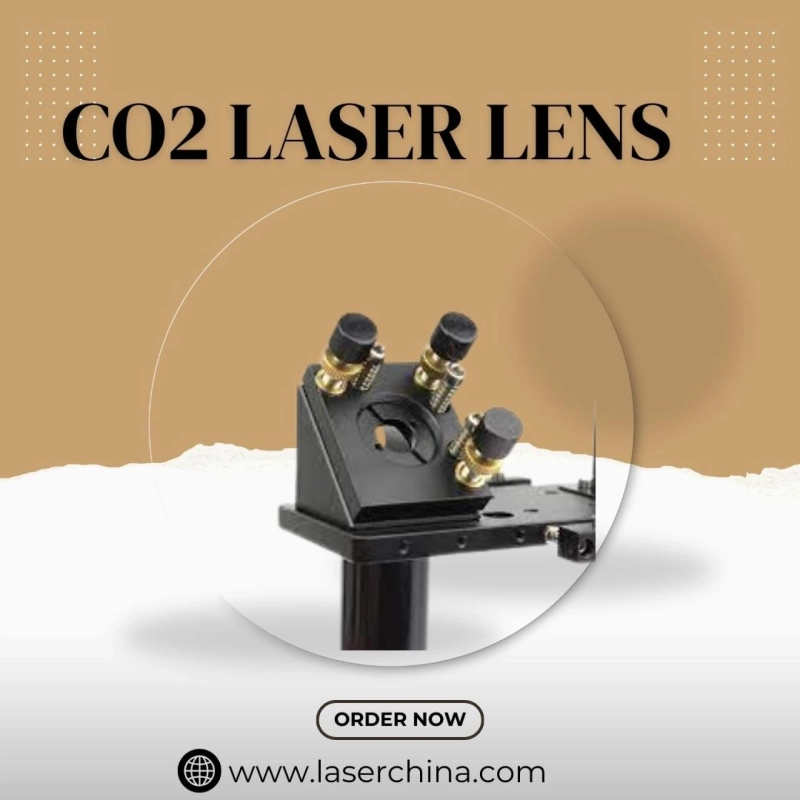CO2 laser lenses are critical components in CO2 laser systems, enabling precise control and manipulation of laser beams for cutting, engraving, and marking applications. From industrial manufacturing to artistic creations and beyond, CO2 laser lenses play a crucial role in achieving fine detail, accuracy, and efficiency in laser-based processes. In this comprehensive guide, we'll delve into the world of CO2 laser lenses, exploring their functions, types, applications, and advancements, as well as their pivotal role in driving innovation and progress in CO2 laser technology.
Understanding CO2 Laser Lenses: Precision Optics for Laser Systems
CO2 laser lenses are specialized optical components designed to shape, focus, or collimate laser beams in CO2 laser systems. These lenses are engineered to meet stringent performance requirements, ensuring minimal loss and distortion of laser light. CO2 laser lenses are typically made from high-quality optical materials such as zinc selenide (ZnSe) or germanium (Ge) and are available in various configurations to suit different CO2 laser applications and system setups.
Types of CO2 Laser Lenses
There are several types of CO2 laser lenses, each serving specific functions in CO2 laser systems:
Focusing Lenses: Focusing lenses are designed to converge CO2 laser beams to a small spot size, enabling high-power density and precise material processing. These lenses are commonly used in laser cutting, engraving, and marking applications, where fine detail and accuracy are essential.
Collimating Lenses: Collimating lenses are used to transform divergent CO2 laser beams emitted by laser sources into collimated beams with parallel rays. These lenses ensure uniform beam quality and consistency over long distances, making them essential for applications such as laser welding and surface treatment.
Reflective Mirrors: Reflective mirrors are used in conjunction with focusing and collimating lenses to redirect and manipulate CO2 laser beams with precision. These mirrors are typically made from highly reflective materials such as molybdenum or silicon and are used in laser resonators and beam delivery systems.
Each type of CO2 laser lens offers unique optical properties and performance characteristics, making it suitable for specific CO2 laser applications and system configurations.
Applications of CO2 Laser Lenses
CO2 laser lenses find applications in a wide range of industries and fields, including:
Industrial Manufacturing: CO2 laser lenses are used in laser cutting, welding, engraving, and marking processes across various industries, including automotive, aerospace, electronics, and signage. These lenses enable precise and efficient material processing with minimal waste and heat-affected zones.
Artistic Creations: In the realm of artistic creations and hobbyist endeavors, CO2 laser lenses are used for etching, engraving, and cutting a wide range of materials, including wood, acrylic, glass, and leather. These lenses enable artists and craftsmen to achieve intricate designs and personalized creations with ease.
Medical Device Fabrication: CO2 laser lenses play a crucial role in the fabrication of medical devices and components, including surgical instruments, implants, and prosthetics. These lenses enable precise machining and shaping of medical-grade materials such as stainless steel, titanium, and polymers.
Research and Development: In research laboratories and academic institutions, CO2 laser lenses are used for experiments in physics, materials science, chemistry, and biology. These lenses enable researchers to explore new phenomena, develop novel materials, and advance scientific knowledge in various fields.
Advancements in CO2 Laser Lens Technology
Recent advancements in materials science, manufacturing techniques, and optical coatings have led to significant improvements in CO2 laser lens technology. These advancements have resulted in lenses with higher transmission, improved durability, reduced absorption, and enhanced thermal stability, enabling more efficient and reliable CO2 laser systems across various industries.
Investing in Quality CO2 Laser Lenses
When it comes to CO2 laser systems, the quality of optical components such as lenses is crucial for achieving optimal performance and reliability. Investing in high-quality CO2 laser lenses from reputable manufacturers ensures consistent results, minimal downtime, and maximum return on investment for your CO2 laser systems.
Conclusion: Leveraging the Power of CO2 Laser Lenses for Precision and Efficiency
In conclusion, CO2 laser lenses are indispensable tools for achieving precision, accuracy, and efficiency in CO2 laser systems across a wide range of industries and applications. Whether you're cutting metal in a manufacturing facility, creating art in a studio, or conducting research in a laboratory, CO2 laser lenses play a critical role in shaping, focusing, and directing laser beams with precision and control. By understanding the functions, types, and applications of CO2 laser lenses and investing in quality optical components, you can leverage the power of CO2 laser technology to drive innovation and progress in your field.


